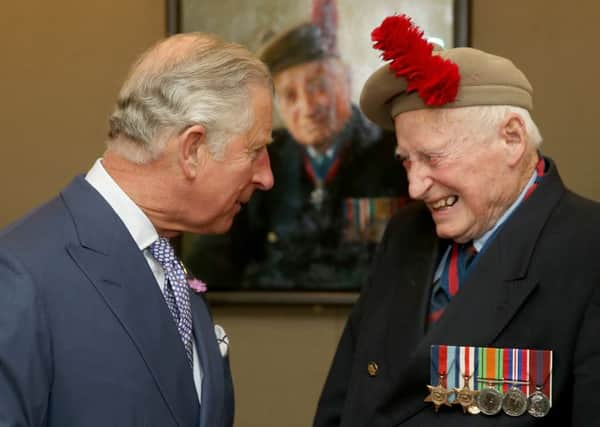Obituary: Brian Stewart, CMG, MI6 director


Brian Stewart was an intrepid and charismatic character straight from the pages of a John Buchan novel. He led a daring and valiant life but his service to his country was total and his loyalty unquestioning. Stewart was a spy for more than 20 years and Britain’s representative in Hanoi during the Vietnam War. From there he supplied crucial information not only to London but also, on occasions, to Washington. He was one of MI6’s foremost and most reliable officers who experienced frontline service and gained clandestine expertise in the Far East. His renown in MI6 was high and Sir Colin McColl, a former chief of the Secret Intelligence Service has said of him: “He was one of the most remarkable people in the service. Everything he did, he did very well. It was quality work.”
Although he spent many years abroad Stewart remained a staunch Scot. “Dad never lost his love of Scotland,” his son Rory, the Conservative MP for Penrith and the Border, told The Scotsman yesterday.
Advertisement
Hide AdAdvertisement
Hide Ad“When he was consul-general in Shanghai he taught the embassy staff and the KGB officer the Eightsome Reel. The KGB officer asked Dad, ‘Is this a dance for the aristocracy or the peasants?’ Dad replied without a blink, ‘In Scotland we don’t have such divisions.’
“He wore tartan trews every day in Crieff and played records of pipe music. He was a tremendous father and much respected by colleagues and friends.”
Brian Thomas Webster Stewart was the son of Redvers and Mabel Stewart. His father was a jute merchant who lived and worked in Calcutta for half a century until Partition in 1947. Stewart seldom saw his father and was brought up by an aunt in Kirriemuir, Angus. He attended Glenalmond College where he played the drums in the school pipe band, and read politics, philosophy and economics at Worcester College, Oxford.
On the outbreak of war he joined the Tyneside Scottish regiment, the predecessor to the 3rd battalion of the Black Watch. He displayed both leadership and bravery at the D-Day landings. He landed on D-Day +2, as commander of the anti-tank platoon, leading his men at the battle for the town of Rauray in Normandy. Despite being injured in the leg, Stewart showed considerable fortitude when he engaged in a fierce battle with a heavily armoured Panzer Division.
Stewart, resplendent in his Tam O’Shanter with the Red Hackle, was among the 12 D-Day veterans to have their portrait painted for an exhibition at the Queen’s Gallery in London. The exhibition was called The Last of the Tide, and Stewart was photographed in genial conversation with Prince Charles who opened the exhibition, having also commissioned the works.
After D-Day, Stewart was posted to Japan to serve in the Pacific campaign until VJ Day. On being demobbed, he joined the Colonial Civil Service initially in Malaya but was then made secretary for Chinese affairs in Malacca and Penang, where much of his time was spent reporting back to London on the guerrilla uprising by Communist insurgents in Malaya. He left Malaya in 1957 and was immediately recruited by MI6 and posted to Rangoon. Shanghai followed, where he was given the title of consul-general but, in fact, operated as a spy accumulating information about the secretive society in Beijing.
Stewart was a formidable linguist and spoke Chinese fluently – both Cantonese and Mandarin – and was a man of much discretion, charm and wit. In many ways he was the archetypal espionage operator: cool, bright and invariably calm.
With a high reputation as an authority on Chinese affairs he became the secretary of the Joint Intelligence Committee at Number 10. After two years in the post, Stewart was appointed to another political hotspot: Hong Kong, one of the UK’s vital listening posts. Stewart was initially MI6 station chief but was soon promoted to be an MI6 director. Many expected Stewart to succeed Sir Maurice Oldfield as the head of MI6, but Arthur Franks was appointed to the role.
Advertisement
Hide AdAdvertisement
Hide AdStewart retired from MI6 in 1978 and became a director of the Rubber Growers’ Association Malaysia, based in Kuala Lumpur, where he ran a mini police force for three years. From 1981 to 1997, he was director of operations (China) for Racal Electronics, based in Hong Kong and Beijing. He published several books including an inquiry into spying (Why Spy?) and All Men’s Wisdom.
Stewart retired to his beloved home in Crieff where he took much pleasure in planting more than 2000 trees and painting in watercolours. Other interests included chinoiserie, skiing and chamber music. He remained active and energetic nearly all his life: Stewart was a man of many talents, disciplines and enthusiasms, responding to challenges with a ready eagerness, passion and drive. National Geographic wrote: “Brian Stewart is one of a long line of self-sufficient Scottish Highlanders who fought on the beaches of Normandy before becoming deeply involved in counterinsurgency operations against guerrillas in Malaysia.”
His son Rory shared a more personal memory. “Dad used to get up and play with me for three hours from 6am. He loved gadgets and toys and was a most playful father. I have such happy memories of him setting out on the floor the deployment of troops for Napoleonic battles. He also taught me the intricacies of the sword dance in Kuala Lumpar. Dad has been much occupied recently writing a book on the Battle of Flodden.”
Stewart, who was awarded the CMG in 1969, married Peggie in 1946. He married Sally Acland in 1972. She and two daughters from his first marriage, and a son (Rory) and daughter from the second, survive him.